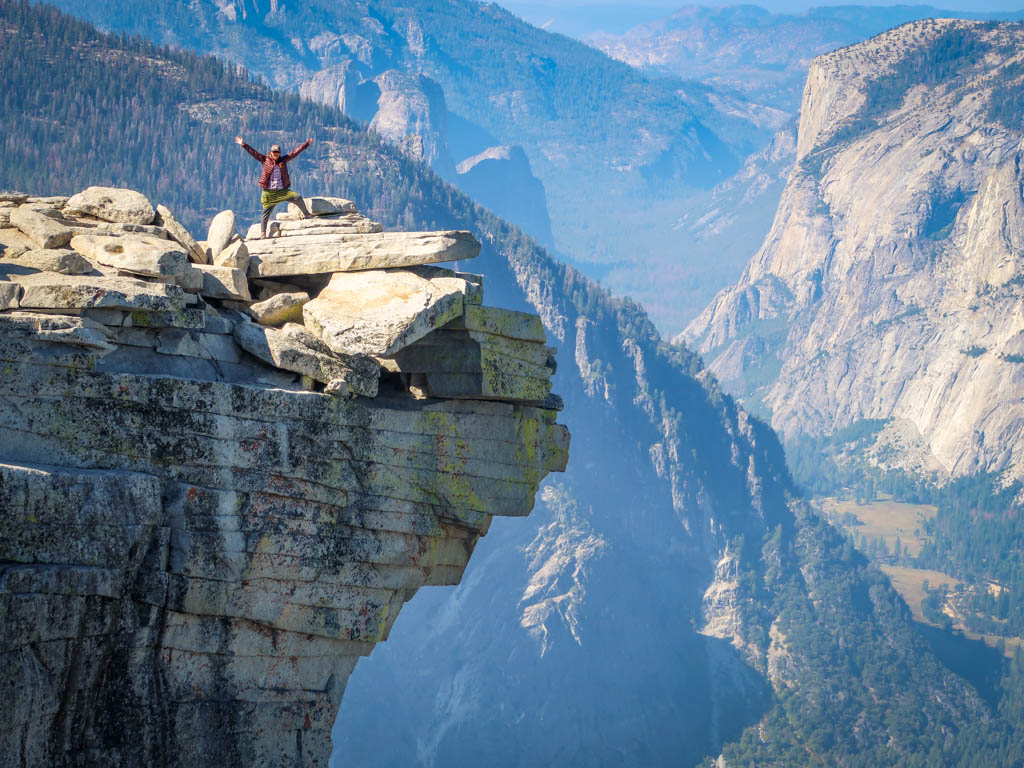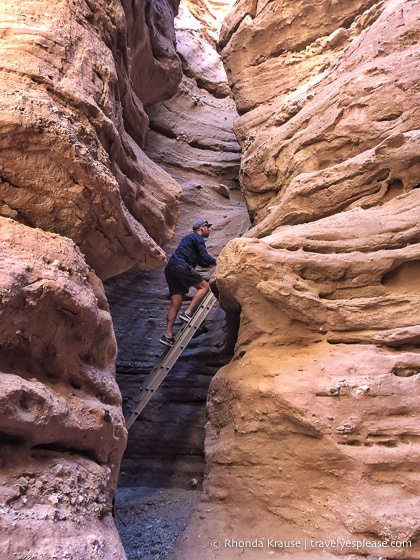# Epic Yosemite: Climbing the Half Dome Cables
Embark on an exhilarating journey to the summit of Half Dome, one of Yosemite National Park’s most iconic attractions. This adventure is not just a hike; it’s a climb that engages both your body and spirit.
With its imposing granite crest rising nearly 5,000 feet above Yosemite Valley, the Half Dome cables offer a dramatic challenge that has captivated climbers for decades. Prepare to experience one of the most unforgettable climbs in the world.
## What Is the Half Dome Cables Experience Like?
The Half Dome cables climb is a mixture of natural beauty and physical challenge, an experience that leaves climbers with a profound sense of accomplishment. The ascent involves a steep incline using metal cables as makeshift handrails, which are installed seasonally.
Climbing the cables is a rigorous and rewarding endeavor that provides a 360-degree view of Yosemite’s vast wilderness. The feeling of solidarity among climbers provides a unique camaraderie, as everyone works towards the common goal of reaching the peak.
As you ascend, the panoramic scenery unfolds to reveal the grandeur of Yosemite’s high country, with each step bringing its own reward. The climb is not technically difficult, but it requires strength, stamina, and determination.
Once at the top, climbers are rewarded with breathtaking views from the Half Dome summit, an unparalleled vista of the Sierra Nevada. The sense of achievement is immense, as is the awe for Yosemite’s natural wonders.
## How To Prepare for Climbing the Half Dome Cables?
Preparing for the Half Dome cables climb necessitates careful planning and attention to physical fitness. Training for the hike should include cardiovascular activities and strength training, particularly for the upper body.
Securing a permit is crucial, as the permits for climbing Half Dome cables are distributed through a lottery system due to the high demand and to minimize overcrowding on the cables.
Prospective climbers should gather essential Half Dome climbing gear recommendations, including durable gloves for gripping the cables, appropriate footwear for the granite surface, and sufficient water and food for the day-long excursion.
Researching the best time to climb Half Dome cables can also enhance the experience, as weather conditions and crowd sizes vary throughout the year. Early morning starts are generally recommended to avoid the afternoon heat and potential thunderstorms.
Safety tips for Half Dome hikers are widely available and should be studied in advance. This includes understanding the physical demands, being aware of altitude sickness, and knowing how to navigate the cables safely.
## What Are the Key Stats of the Half Dome Hike?
The Half Dome hike is a demanding trek with key stats that hikers should be aware of before embarking on this journey. The round-trip distance from Yosemite Valley is approximately 14 to 16 miles, depending on the chosen trail.
- The elevation gain is significant, totaling around 4,800 feet from the valley floor to the summit.
- Most hikers take 10 to 14 hours to complete the round trip, thus an early start is imperative.
- The steepest part of the hike is the final 400 feet, where the cables come into play.
- Along the way, hikers will encounter iconic landmarks such as the Mist Trail and Vernal Fall.
- The route’s difficulty is strenuous, and it’s recommended only for those in good physical condition.
The Half Dome hike is not just about reaching the top; it’s a journey through some of the most striking landscapes in Yosemite National Park.
## What Should You Know About the Climb Down the Half Dome Cables?
The descent from the Half Dome cables requires as much caution and preparation as the ascent. Climbers must take care to navigate the cables with patience, allowing for others to ascend while finding secure footing during the descent.
It is vital to remain focused and maintain a steady pace, as fatigue can become a factor after the exhilaration of reaching the summit. Using gloves with a good grip will help maintain a firm hold on the cables during the downward climb.
Many climbers find the descent more psychologically challenging than the ascent, as the view downward can be daunting. It is crucial to remain confident and composed, moving with deliberation and care to prevent slips or falls.
The importance of letting faster hikers pass and not rushing is emphasized, as the cables can become congested, especially during peak hours. Cooperation among climbers ensures a safe and enjoyable descent for all.
## Are There Risks Involved With the Half Dome Cables?
Climbing the Half Dome cables involves inherent risks that hikers should be fully aware of. The slope is steep, and the granite can be slippery, especially if wet from rain or morning dew.
There have been accidents and even fatalities on the Half Dome cables, underscoring the necessity of taking the climb seriously and preparing adequately. Upper body strength, a calm demeanor, and careful footing are essential for safety.
Weather is a critical factor; storms can bring lightning, which is extremely dangerous on exposed rock surfaces. It’s important to check the forecast and begin the descent immediately if bad weather appears imminent.
The National Park Service has installed poles and boards to create the cable route, but these are not fail-safe systems. Each climber must take personal responsibility for their safety, using harnesses or carabiners if they feel it necessary.
Climbers should be mindful of their physical limitations and not push beyond their comfort zone, as this can lead to dangerous situations for both themselves and others on the cables.
## What Is the History of the Half Dome Cables?
The history of the Half Dome cables is a testament to the human spirit’s quest for adventure. Installed in 1919, the cables were a response to the increasing number of visitors seeking to experience the summit’s panoramic views.
The Sierra Club, an environmental organization, played a crucial role in the cables’ installation, promoting safe and accessible climbing for enthusiasts. Over the years, the cables have been upgraded and maintained to enhance safety.
The cables are typically up from late May to early October, weather permitting, accommodating thousands of climbers each season. The National Park Service manages the cables and permits to ensure the Half Dome remains a challenging yet achievable goal for many.
As part of the UNESCO World Heritage Site, Half Dome and its cables are not only a piece of climbing history but also a symbol of Yosemite’s commitment to conserving natural beauty while facilitating human adventure.
Frequently Asked Questions About Climbing Half Dome
How Long Does It Take to Climb the Half Dome Cables?
On average, climbers should allocate 10 to 14 hours to complete the Half Dome hike, including both ascent and descent. This timeframe can vary based on individual pace, weather conditions, and rest breaks.
Starting early in the morning is strongly advised to ensure ample daylight for both the climb and descent and to avoid the heat of the day. It’s equally important to pace oneself and take appropriate breaks, especially on hot summer days.
What Should I Bring for Climbing the Half Dome Cables?
A well-packed backpack is essential for a successful Half Dome climb. Key items should include:
- Water: At least one gallon per person to stay hydrated throughout the day.
- Food: High-energy snacks and a lunch to maintain energy levels.
- Gloves: With a good grip for handling the cables.
- Footwear: Sturdy, comfortable boots with a good tread for grip.
- Sun protection: Hat, sunglasses, and sunscreen to protect against UV rays.
Additionally, consider bringing a headlamp in case the hike extends past sunset, and always pack out all trash to preserve the park’s natural beauty.
Is It Safe to Climb the Half Dome Cables Alone?
While many individuals do climb the Half Dome cables solo, it is generally safer to climb with a partner or group. A companion can offer assistance in case of an emergency, help with navigation, and provide moral support during challenging sections of the climb.
If you choose to climb alone, ensure that someone knows your itinerary and expected return time. Always carry a fully charged cell phone, although be aware that reception in the park can be unreliable.
What Are the Best Times to Hike Half Dome?
The best times to hike Half Dome are during the late spring to early fall months when the cables are up and the weather is more predictable. Avoiding weekends and starting early in the morning can help you evade the crowds and experience a more solitary climb.
Early June and late September are considered ideal times due to milder weather and thinner crowds. Always check the weather forecast before your hike to avoid thunderstorms and extreme heat.
Are There Any Fees for Climbing the Half Dome Cables?
There is no specific fee for climbing the cables, but climbers must obtain a permit, which has an application cost. Additionally, there is an entrance fee for Yosemite National Park, which can vary depending on the vehicle and length of stay.
Annual passes are available for frequent visitors and can offer savings over time. All fees go towards maintaining the park and preserving its natural wonders for future generations.
To complement your reading, watch this insightful journey up the Half Dome cables:







This guide is awesome! I’ve always been intrigued by the Half Dome climb, and this post really breaks down everything you’d need to know to tackle it safely and enjoyably. Love the emphasis on preparation and safety—it makes the adventure sound both thrilling and doable. Definitely inspired to start planning a trip to Yosemite now!